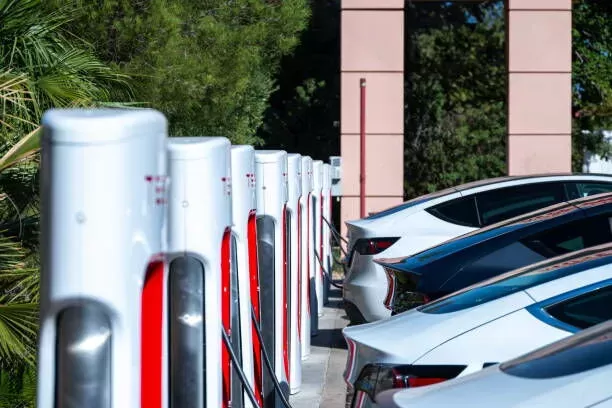Notifications

4 minutes, 40 seconds
-2 Views 0 Comments 0 Likes 0 Reviews

Ultrafast DC Charging: Powering the Future of Electric Mobility
Introduction: Charging Ahead
As a leading EV charger manufacturer in China, Topper Company provides reliable electric vehicle charging equipment and comprehensive charging solutions.
As electric vehicles (EVs) surge in popularity, fast and efficient charging has become critical. Ultrafast DC charging—also called high-power charging (HPC)—is transforming how we power EVs, delivering between 150 kW and 600 kW to recharge batteries to 80% in as little as 10–30 minutes. This leap in speed makes EVs more practical for all drivers, from commuters to long-haul travelers.
What Is Ultrafast DC Charging?
DC fast chargers deliver direct current straight to the battery, bypassing the vehicle’s onboard AC-to-DC converter and enabling significantly higher power levels.
Level 1 (AC): 120V – ~3–5 miles of range/hour
Level 2 (AC): 240V – ~15–30 miles/hour
Level 3 (DC): 400V–1000V – ~100–200+ miles in 15–30 mins
Ultrafast DC falls under Level 3, pushing the boundaries of what's possible in EV refueling.
Why It Matters
Speed and Convenience
Ultrafast charging drastically reduces wait times, making EV charging comparable to refueling a petrol car. This boosts adoption by addressing one of the biggest user concerns: time.
Enables Long-Distance Travel
High-speed chargers along highways eliminate "range anxiety," making EVs suitable for road trips and long hauls.
Supports Commercial Fleets
Taxis, delivery vans, and buses benefit from reduced downtime, increasing productivity and supporting electrification in high-utilization sectors.
Expands Urban Access
For city residents without home chargers, public ultrafast stations offer a quick and reliable solution.
Builds Confidence in EV Infrastructure
The wider the charging network, the more viable EVs become for mainstream drivers.
How It Works: Behind the Tech
Ultrafast charging relies on innovations such as:
High-voltage EV architecture (typically 800V+)
Liquid-cooled cables for heat management
Smart charging protocols for communication and optimization
Thermal management to protect batteries during rapid charging
Common standards include CCS, CHAdeMO, and Tesla’s Superchargers—each aiming for high-speed, safe, and interoperable charging.
Challenges to Overcome
Grid Demand
High power draws strain local grids. Utilities and site operators must upgrade infrastructure and explore battery storage or renewable integration to balance loads.
Installation Costs
Ultrafast stations are expensive due to advanced components, cooling systems, and electrical upgrades—but prices are falling as technology matures.
Vehicle Compatibility
Not all EVs can handle ultrafast speeds yet. As more 800V-capable models roll out, compatibility will improve.
Battery Degradation
Frequent ultrafast charging can reduce battery lifespan. Manufacturers are developing solid-state batteries and smart algorithms to mitigate wear.
Global Growth and Future Trends
Governments worldwide are investing heavily:
Europe’s Topper network features 350 kW chargers along major routes.
The U.S. NEVI program is funding a national DC fast-charging network.
China continues to expand its ultrafast charging footprint rapidly.
The global ultrafast DC charging market is projected to exceed $25 billion by 2030, driven by EV growth and supportive policies.
Looking Ahead: What’s Next
Wireless DC charging for cable-free convenience
AI-powered load management to reduce wait times
Vehicle-to-grid (V2G) for energy sharing
Compact urban stations to serve city dwellers efficiently
Conclusion: Leading the Charge
Ultrafast DC charging is a cornerstone of EV adoption. By dramatically cutting charge times and supporting high-use applications, it removes major friction points in the electric transition. As technology improves and networks expand, ultrafast charging will become not just common—but essential—for the zero-emissions future.Learn more about Google SEO.
China EV Chargers EV Charger Manufacturer EV Charging Solutions

